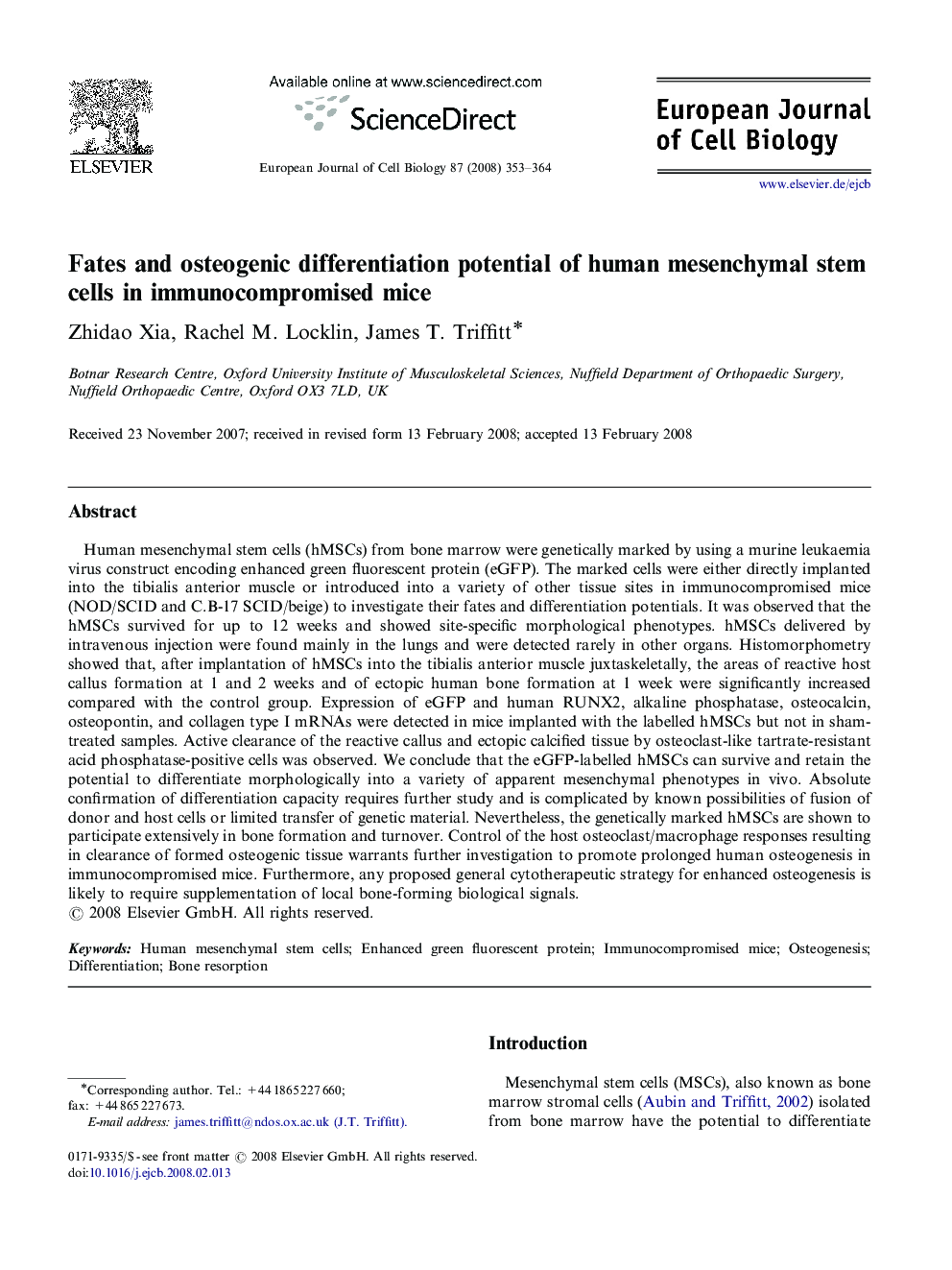| کد مقاله | کد نشریه | سال انتشار | مقاله انگلیسی | نسخه تمام متن |
|---|---|---|---|---|
| 2179180 | 1549749 | 2008 | 12 صفحه PDF | دانلود رایگان |

Human mesenchymal stem cells (hMSCs) from bone marrow were genetically marked by using a murine leukaemia virus construct encoding enhanced green fluorescent protein (eGFP). The marked cells were either directly implanted into the tibialis anterior muscle or introduced into a variety of other tissue sites in immunocompromised mice (NOD/SCID and C.B-17 SCID/beige) to investigate their fates and differentiation potentials. It was observed that the hMSCs survived for up to 12 weeks and showed site-specific morphological phenotypes. hMSCs delivered by intravenous injection were found mainly in the lungs and were detected rarely in other organs. Histomorphometry showed that, after implantation of hMSCs into the tibialis anterior muscle juxtaskeletally, the areas of reactive host callus formation at 1 and 2 weeks and of ectopic human bone formation at 1 week were significantly increased compared with the control group. Expression of eGFP and human RUNX2, alkaline phosphatase, osteocalcin, osteopontin, and collagen type I mRNAs were detected in mice implanted with the labelled hMSCs but not in sham-treated samples. Active clearance of the reactive callus and ectopic calcified tissue by osteoclast-like tartrate-resistant acid phosphatase-positive cells was observed. We conclude that the eGFP-labelled hMSCs can survive and retain the potential to differentiate morphologically into a variety of apparent mesenchymal phenotypes in vivo. Absolute confirmation of differentiation capacity requires further study and is complicated by known possibilities of fusion of donor and host cells or limited transfer of genetic material. Nevertheless, the genetically marked hMSCs are shown to participate extensively in bone formation and turnover. Control of the host osteoclast/macrophage responses resulting in clearance of formed osteogenic tissue warrants further investigation to promote prolonged human osteogenesis in immunocompromised mice. Furthermore, any proposed general cytotherapeutic strategy for enhanced osteogenesis is likely to require supplementation of local bone-forming biological signals.
Journal: European Journal of Cell Biology - Volume 87, Issue 6, 30 June 2008, Pages 353–364